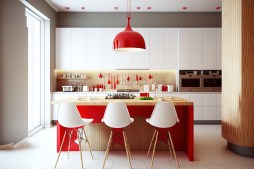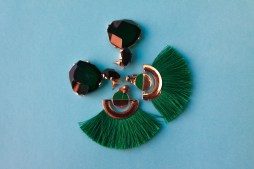The Evolution of Home Decor: How Minimalism is Influencing Modern Aesthetics
In recent years, minimalism has emerged as a powerful design philosophy that emphasizes simplicity and functionality. The rise of minimalism in home decor reflects a broader cultural shift towards valuing experiences over possessions and prioritizing quality over quantity. This article explores the evolution of minimalism in modern aesthetics, highlighting how decorating with less can lead to more impactful living spaces.
Understanding Minimalism in Decor
Minimalism is rooted in the idea that less is more. This design approach focuses on clean lines, uncluttered spaces, and a limited color palette. By stripping away excess, minimalist decor allows for greater appreciation of each piece within a room. Key elements of minimalist design include functional furniture, open spaces, and intentional use of natural light. It encourages homeowners to curate their belongings with purpose and mindfulness.

The Psychological Benefits of Minimalist Spaces
Beyond aesthetics, minimalism also offers psychological benefits. Clutter can lead to feelings of stress and anxiety; therefore, creating an organized environment can promote calmness and clarity. Minimalist spaces often evoke tranquility by providing visual relief from cluttered designs. Research shows that environments designed with minimalistic principles enhance focus and creativity while fostering overall well-being.
Sustainable Living Through Minimalism
As environmental concerns grow increasingly important, many are turning to minimalism as a sustainable lifestyle choice. By embracing fewer possessions, individuals can reduce consumption and waste significantly. Minimalist decorating promotes thoughtful purchasing decisions—favoring high-quality items that will stand the test of time over fast fashion or fleeting trends. This not only supports sustainability but also encourages ethical consumer practices.
Tips for Incorporating Minimalism into Your Home
To embrace minimalist decor in your own home, start by decluttering your space—remove items you no longer need or love. Next, choose versatile furniture pieces that serve multiple purposes; for example, an ottoman that doubles as storage or a coffee table that functions as a workspace. Opt for neutral colors combined with natural textures to create an inviting atmosphere while maintaining simplicity.
The Future of Home Decor: A Shift Towards Intentionality
Looking ahead, it’s clear that minimalism will continue shaping home decor trends as people seek intentional living spaces enriched by meaning rather than material accumulation. As technology advances and lifestyles evolve further towards flexibility—such as remote work—the demand for adaptable minimalist environments will only increase.
In conclusion, the rise of minimalism has revolutionized modern aesthetics by demonstrating how decorating with less can convey more impact both visually and psychologically. Embracing this trend not only enhances our living environments but also enriches our lives through intentional choices—all while promoting sustainable practices.
This text was generated using a large language model, and select text has been reviewed and moderated for purposes such as readability.











